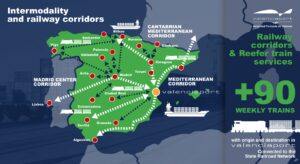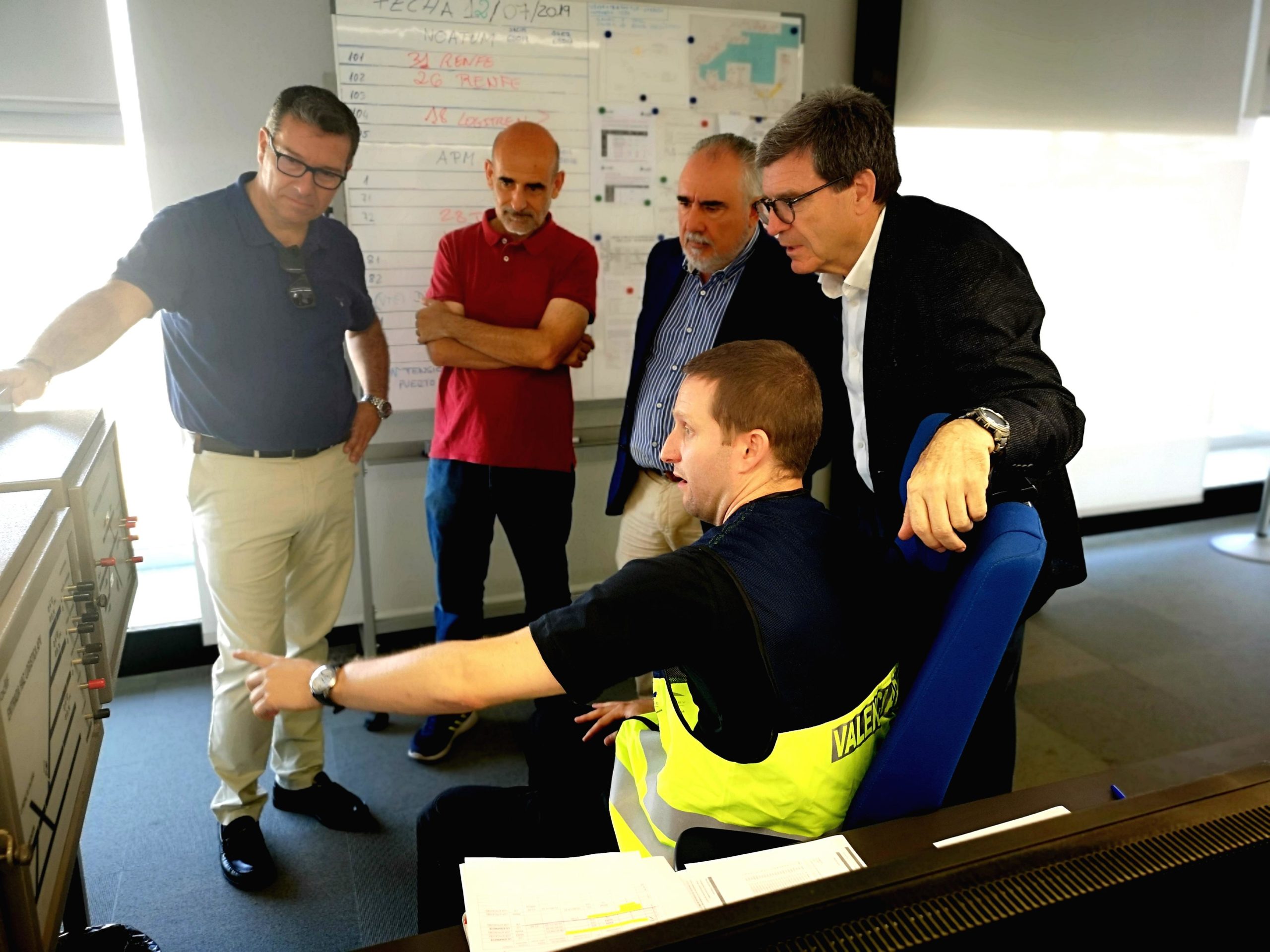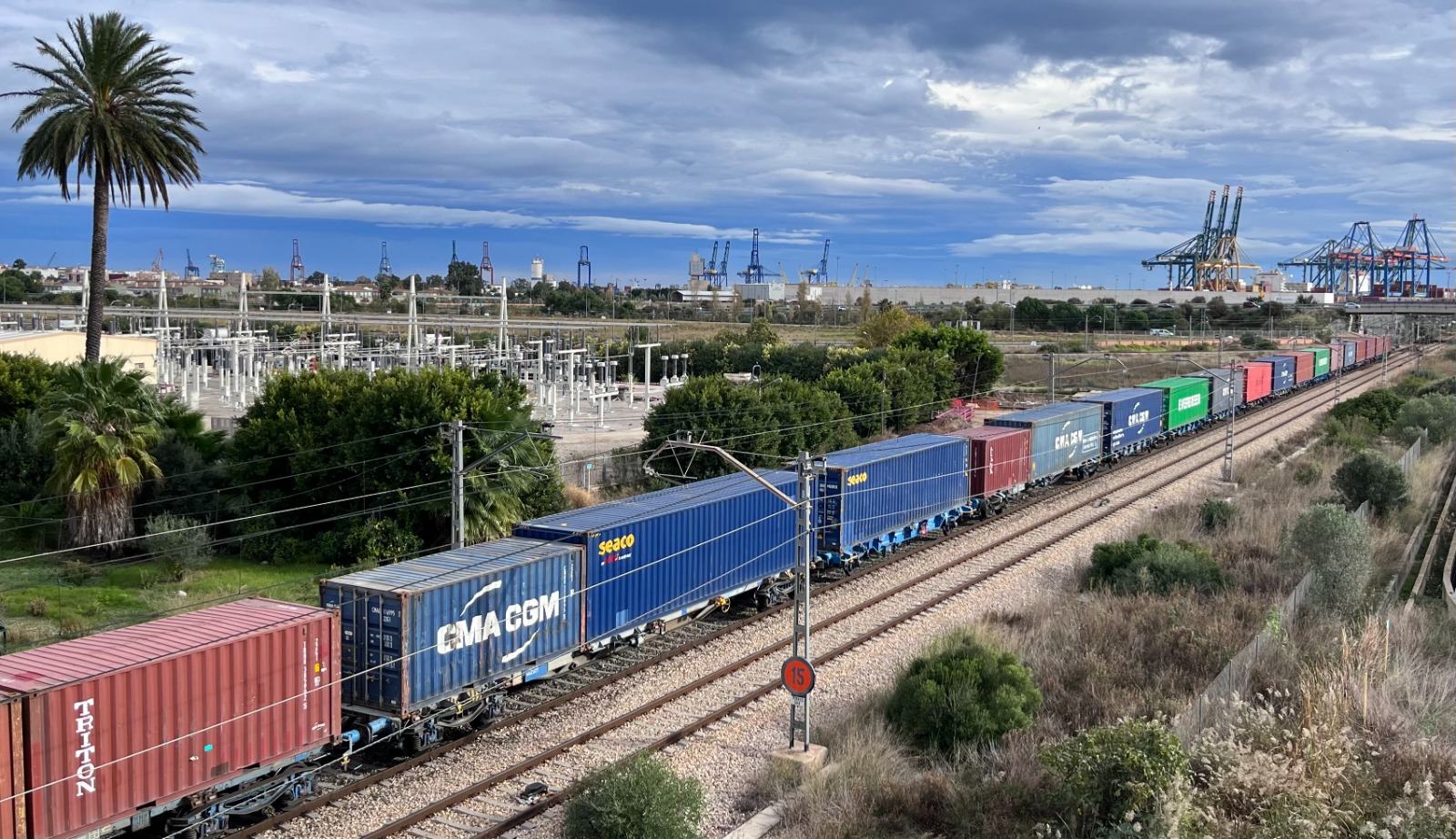
In 2022, a total of 4,634 trains entered or left the Port of Valencia, 9% more than in 2021
Compared to 90 trains a week last year, in 2021 there were 80. In the first weeks of 2023, there have been weeks with 99 trains
Valenciaport’s commitment to the railway, a clear commitment to environmental sustainability and the fight against decarbonisation
The number of wagons grows by 14%, TEUs by 10% and freight moved by rail by 8%
The Valencia Port Authority is allocating 240 million Euro to improve intermodality and the internal railway network
Madrid accounted for 70% of the goods and containers entering or leaving by rail, whereas Zaragoza accounted for 87% of the vehicles arriving at the Valencian precinct
València, March 13th, 2023.- The railway is gaining more weight in the Port of Valencia. 13 trains a day, 90 a week, 380 trains a month. In total, 4,634 trains entered or left the Valencian precinct in 2022, 9% more than in 2021. Trains that are longer, with more wagons and carrying more containers and goods. And the trend for the coming years is that this figure will continue to increase, both in Valencia and in Sagunto, the latter port where work is being done on rail access.
This is no coincidence. It is the commitment that the Port Authority of Valencia (PAV) has been making for years to promote the rail-sea interconnection for the transport of goods. The objective is clear: to considerably increase the 4% share of the train in the movement of goods and products in order to get closer to the European average of 18%. In fact, the APV has budgeted 240 million Euro for actions with the locomotive and wagons as the main characters, in addition to other projects such as the Valencia-Madrid railway motorway, the support to loading points in its hinterland or the use of new technologies in the sector.
 According to the Port of Valencia’s rail-port traffic data, in 2022 a total of 4,634 trains entered or left the Valencian docks compared to approximately 4,200 in 2021. In addition, the average length of these trains was 495 metres compared to 485 in the previous year, while the number of wagons in 2022 rose to 87,070 compared to 76,563 in 2021, which represents an increase of 15%.
According to the Port of Valencia’s rail-port traffic data, in 2022 a total of 4,634 trains entered or left the Valencian docks compared to approximately 4,200 in 2021. In addition, the average length of these trains was 495 metres compared to 485 in the previous year, while the number of wagons in 2022 rose to 87,070 compared to 76,563 in 2021, which represents an increase of 15%.
In 2022, a total of 2,230,683 goods were transported by rail, 8% more than in 2021, and 236,142 TEUs (standard 20-foot containers) were used, 21,594 containers more than in the previous year, an increase of 10%. In addition, the container data shows an upward trend in recent years, in 2021 the share of containers moved by train compared to the Port’s total was 7.8%, a figure which in 2022 stood at 8.9%.
The president of the PAV, Aurelio Martínez, has highlighted “the investment effort that Valenciaport has been making in recent years, with more than 240 million euros, is paying off. The railway is a key element in the movement structure of the Port of Valencia, as the figures show. Our aim is to keep on increasing this traffic share, betting on the train, long-distance lines, loading points, the support to railway connections and the improvement of infrastructures in our inland network”.
“These are very positive figures that prove the Port’s efforts in its commitment to intermodality and the railways, with important investments that we are making, which are favouring the increase in traffic. These are actions that make us continue to make progress. In fact, so far this year we have reached a quota of 99 trains per week”, the head of Valenciaport pointed out.
Madrid continues to be the origin/destination, accounting for 7 out of every 10 goods and 67% of TEUs. Bilbao gains share with 7% of goods and 5% of containers, followed by Zaragoza with similar figures. It should be noted that between the Aragonese capital and the Port of Valencia 87% of the cars arriving at the Valencian precinct by rail are moved.
 Commitment to intermodality
Commitment to intermodality
The PAV’s objective for the coming years is to continue to increase the use of trains in freight traffic arriving and departing from Valenciaport, hence the importance of undertaking the necessary actions to adapt rail accessibility. Thus, the PAV is making investments to take advantage of the synergy between maritime and rail transport in order to promote competitiveness and contribute to the reduction of CO2 emissions.
Specifically, over the next few years, investments of around 240 million euros are planned to promote accessibility and improve Valenciaport’s rail network. These actions are destined to the remodelling of the railway network in the Port of Valencia, the electrification of tracks, the adaptation of the network to the European gauge, the railway access to the Port of Sagunto or the improvement of the Valencia-Teruel-Zaragoza line, among others.
These actions are in line with the Ministry of Transport, Mobility and Urban Agenda through the Mercancías 30 initiative, which aims to boost rail freight transport as the backbone of multimodal logistics chains from the perspective of economic recovery and the achievement of the objectives of decarbonisation and sustainability of transport. To this end, 8,000 million euros will be allocated to infrastructures and digitalisation, in addition to an aid programme included in the Recovery, Transformation and Resilience Plan.
Thus, for example, key infrastructures such as the Cantabrian-Mediterranean Corridor, which is essential to facilitate the work of export companies from Aragon, Navarre, La Rioja and the Basque Country to the Port of Valencia, are being promoted. The APV has also signed a protocol, together with ADIF and the company Tramesa, to promote the first rail motorway linking the port area with Madrid, an initiative that the company in charge of the project is going to extend with another connection linking the Valencian area with Portugal.
In addition, the effort and commitment of the companies operating in Valenciaport should be highlighted. In this sense, MSC started up a rail service dedicated exclusively to reefer transport between Valencia and Zaragoza. For its part, the French shipping company CMA CGM also has a rail service between Valencia and Zaragoza. CSP Iberian Rail has also added a new link with Lisbon/Leixões, the first to cross the peninsula from coast to coast, furthering its strategy of becoming a global intermodal logistics operator. To this must be added the services it offers with Madrid, Zaragoza and Vitoria. In fact, around ten different railway companies operate in the Valencian area, linking up with the main corridors in Spain: Central, Mediterranean and Cantabrian.

